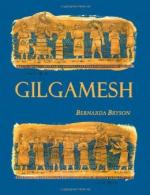|
This section contains 314 words (approx. 1 page at 400 words per page) |

|
The first evidence that the epic of Gilgamesh existed came to light when English archeologists in the nineteenth century discovered an archive of ancient clay tablets in the Middle East. In subsequent years, more tablets were found at other archeological sites in the region.
The inscriptions on these tablets were written in cuneiform, an early form of writing that inscribed wedge-shaped characters into soft clay. The clay was often baked into tablets, just like pottery, to make a permanent record, and many of these have survived for thousands of years.
Cuneiform writing was used by the ancient Sumerian, Akkadian, Assyrian, and Babylonian peoples, and their strange and difficult languages resisted translation for many years. What finally emerged after years of diligent research was the fragmentary narrative of Gilgamesh, a legendary king of the great city of Uruk, which is mentioned in the Bible as Erech. Archeologists have located...
|
This section contains 314 words (approx. 1 page at 400 words per page) |

|




